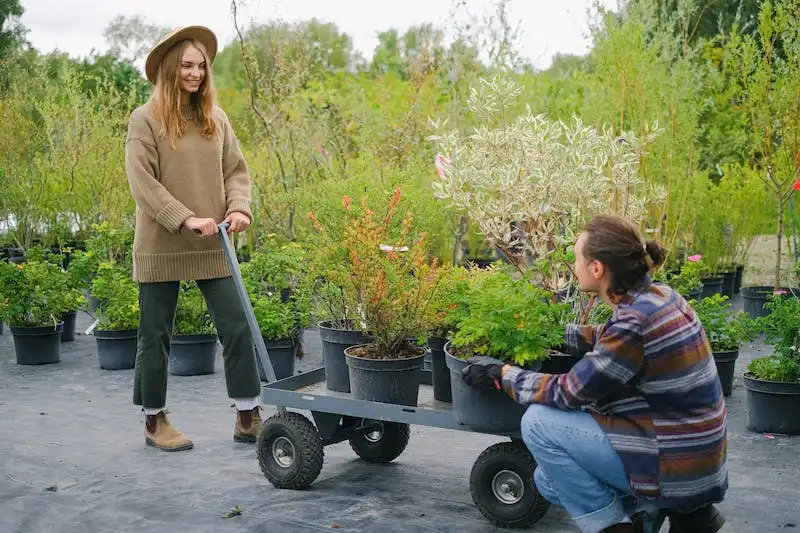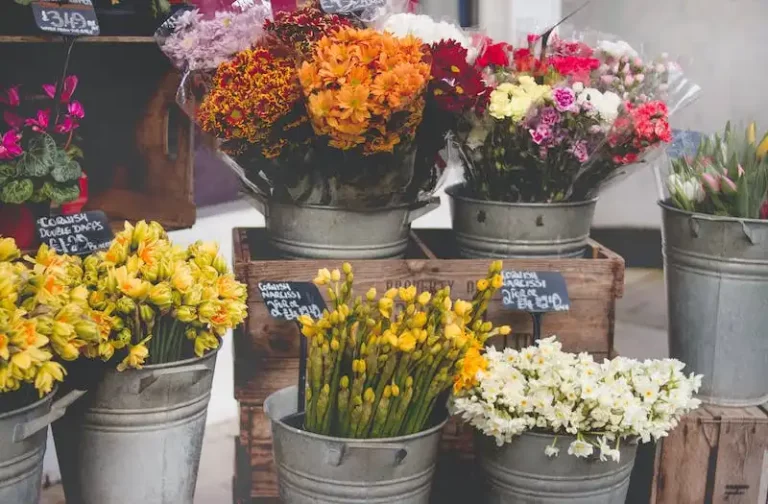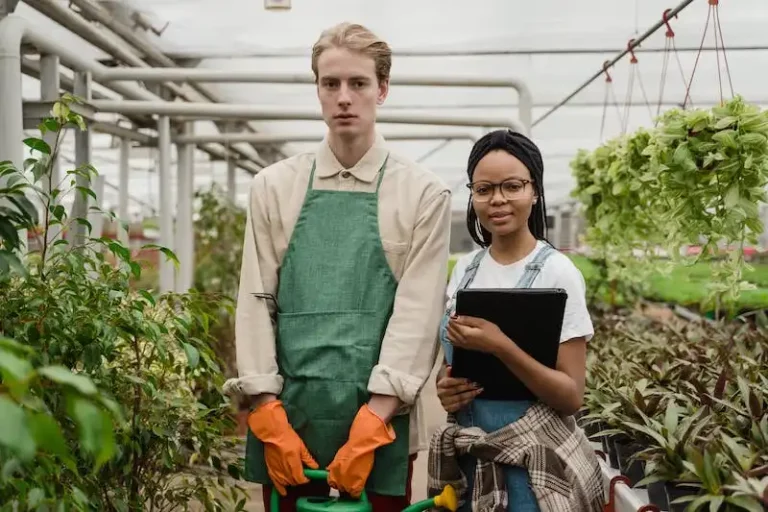Are you ready to begin growing your own cantaloupe? Whether you have a big garden or a small balcony, you can easily join the ranks of home gardeners who successfully grow this sweet melon in containers. So, if you don’t have the space or the time to plant cantaloupe directly in the ground, growing it in pots is a great option.
Cantaloupes, also known as Cucumis melo, can be difficult to grow due to their susceptibility to disease and pests. However, when grown in containers, you have more control over the growing environment, making it easier to prevent problems like yellowing foliage or infected fruits. Plus, container-grown cantaloupes provide the added benefit of having sweetly scented vines right on your porch or patio.
When starting cantaloupe in pots, make sure to choose a container with a minimum size of 4 gallons. The pot should have good drainage to prevent waterlogged roots, so consider adding a few holes at the bottom. You can also use a drip irrigation system to ensure that your cantaloupe plants receive plenty of moisture without overwatering them.
To begin the growing process, start with healthy seedlings. If you’re unsure where to find them, check with local nurseries or garden centers. Look for disease-resistant varieties that can withstand common cantaloupe problems, such as nematodes. Additionally, the container should be filled with well-draining and organic-rich soil to provide the plants with the necessary nutrients.
Cantaloupes need full sun and warm temperatures, so choose a location that gets at least 7 hours of direct sunlight per day. Place the pots in an area that is sheltered from strong winds to prevent the plants from getting damaged. As the vines begin to grow, consider using trellises or cages to support them and prevent the fruits from touching the ground.
One important thing to keep in mind is that cantaloupe plants require a lot of water, especially during fruit development. It’s recommended to water them deeply and regularly, providing enough moisture for the fruits to ripen. You can also supplement with a potassium and iron-rich fertilizer to help the plants thrive.
Once your cantaloupes are ripened and ready to harvest, simply cut them from the vines and enjoy their delicious flavor. If you have a surplus of fruits, you can freeze them for later use in smoothies or desserts. Just make sure to leave a small part of the stem attached to the fruit to maximize its freshness.
In conclusion, growing cantaloupe in containers and pots is a convenient and rewarding way to enjoy these super-sweet melons. With the right conditions and care, you can successfully grow your own cantaloupes and savor their heavenly aroma and taste within a few months. Don’t forget to stay updated with our newsletter for more tips and guides to help you overcome any problems that may arise during the growing process.
Tips for Growing Cantaloupe That’s So Juicy It’s Worth the Effort
Growing cantaloupe in containers and pots is a rewarding endeavor that can yield deliciously juicy fruit. However, there are a few tips and steps to follow to ensure the best possible results.
First, select a suitable container for your cantaloupe. It should be deep enough to accommodate the melon’s root system and provide adequate drainage. A container with a diameter of at least 12 inches is recommended.
When selecting the cantaloupe seed, choose a variety that is well-suited for container gardening. Some popular choices include Ambrosia, Hale’s Best Jumbo, and Sarah’s Choice. Additionally, make sure the seed is fresh and of good quality.
Before planting your cantaloupe, prepare the container by filling it with a well-drained potting mix. This will ensure the roots have plenty of oxygen and will prevent issues like waterlogging and root rot. You can also add a slow-release fertilizer rich in potassium, which is essential for fruit development.
Once the container is ready, it’s time to plant the cantaloupe seed. Start by creating a small hole in the soil and placing the seed inside. Cover it with a thin layer of soil and water gently. Keep the soil consistently moist but not waterlogged.
Cantaloupes are vining plants, so they will need support as they grow. Install a trellis or other climbing structure near the container. This will help the plant grow upward and save space.
Proper spacing is essential for optimal growth. Cantaloupes should be planted about 5 feet apart in the garden. In containers, one plant per pot is recommended.
Regular watering is crucial, especially during the hotter months. Water deeply and thoroughly, making sure to saturate the root zone. Avoid overhead watering, as wet leaves can increase the likelihood of disease.
Cantaloupes are typically ready to harvest about 80-90 days after planting. Look for several signs that the fruit is ready to be picked, such as a sweet aroma, easily separating from the vine with a gentle twist, and a golden color under the netting on the skin.
If you’re interested in overwintering your cantaloupe plants, they can be moved indoors during colder times. They prefer temperatures around 70°F (21°C) and lots of sunlight.
As with any plant, cantaloupes can encounter a variety of issues. Troubleshooting steps include providing proper nutrients, addressing pest problems such as aphids and cucumber beetles, and protecting the plants from strong winds and extreme temperatures.
Lastly, to ensure successful pollination, encourage pollinators like bees to visit your garden. Planting flowers and providing nesting sites will attract them to your cantaloupes.
By following these guidelines and tips, you can grow cantaloupe that is so juicy and sweet it’s worth the effort. Happy gardening!
Growing Cantaloupe in Containers and Pots
If you have limited space or want to easily move your cantaloupe plants around, growing them in containers or pots is a great option. With the right care and attention, you can enjoy delicious and sweet cantaloupes right from your own patio or balcony. In this video, we will guide you through the process of growing cantaloupe in containers and pots.
Firstly, it’s important to select a container or pot that is large enough to accommodate the cantaloupe plant’s roots. A container that is at least 4 gallons in size is typically recommended. Ensure that the container has good drainage and fill it with a well-draining potting mix.
When transplanting cantaloupe seedlings into the containers, gently loosen their roots and place them in the center of the container. Lightly press the soil around the roots to secure the plant. Cantaloupes prefer to grow in warm and sunny locations, so choose a spot where they will receive at least 6 hours of direct sunlight each day.
It’s worth noting that cantaloupes are heat-resistant and thrive in hot climates. However, they also need consistent moisture to grow well. Water the plants deeply, ensuring that the soil is evenly moist. To conserve moisture and prevent weed growth, you can apply a layer of organic mulch around the plant.
Regular fertilizing is essential for healthy cantaloupe plants. You can side-dress the plants with a balanced fertilizer every 2 to 3 weeks. This will provide them with the necessary nutrients to produce abundant and sweet fruits. Monitor the plants for any signs of pests or diseases, and take appropriate action if needed. Organic options such as pyrethrin can be used to control common pests.
Cantaloupe plants need support as they grow larger. You can use a trellis or other training methods to guide the vines upward. This not only saves space but also improves airflow around the plants, reducing the chances of disease. Pruning the plants can also help improve air circulation and reduce the risk of fungal infections.
When the cantaloupes start to form, it’s important to monitor their growth and health. Ensure that the plants receive adequate water and are not stressed by extreme heat. You may also choose to hand-pollinate the flowers to improve fruit set and pollination. Simply transfer pollen from the male flowers to the female flowers using a small brush or cotton swab.
As the fruits mature, keep an eye on their color and size. Cantaloupes are ready to harvest when the skin turns a deep golden color and they start to give off a sweet fragrance. Gently twist the fruit from the stem to harvest. If it’s difficult to detach from the plant, it may need a little more time to ripen.
Remember, cantaloupes are typically spread through seeds, so you can save them from overripe fruits for future planting. With proper care and attention, you can enjoy juicy and flavorful cantaloupes right from your own container garden.
The Best Container Size for Cantaloupe
Growing cantaloupe in containers is a great option for gardeners who have limited space or want more control over the growing environment. When choosing the right container size for your cantaloupes, there are a few factors to consider.
First, cantaloupes are vigorous growers and require plenty of space for their roots to spread out. It is recommended to use containers that are at least 1-2 feet deep and have a diameter of 2-3 feet. This ensures that the plants have enough room to grow and develop a strong root system.
Second, cantaloupes thrive in warm, sunny conditions. Choose containers that can be easily moved to take advantage of the warmest spots in your garden or patio. Keep in mind that cantaloupes need at least 6-8 hours of direct sunlight each day to thrive.
In terms of soil, use a well-draining potting mix that is rich in organic matter. This will provide the cantaloupes with the necessary nutrients and help retain moisture without becoming waterlogged. Adding slow-release fertilizer to the soil before planting ensures a steady supply of nutrients throughout the growing season.
Proper spacing is also important when growing cantaloupes in containers. Aim for a spacing of 2-3 feet between each plant to allow for good air circulation and prevent the spread of diseases. Cantaloupes are susceptible to certain pests and diseases, such as aphids and wilt, so keeping them well-spaced can help reduce the risk of infestation and disease spread.
When it comes to pollination, cantaloupes are mainly self-pollinating but may benefit from the presence of pollinators like bees. Consider planting flowers such as marigolds nearby to attract bees and encourage pollination.
Pruning is also a good practice for container-grown cantaloupes. Regularly remove any dead or diseased leaves to improve air circulation and reduce the risk of diseases. Pruning also helps redirect the plant’s energy towards fruit production.
Lastly, keep in mind that cantaloupes are heavy feeders and require regular fertilizing. Use a balanced fertilizer that is high in potassium, phosphorus, and nitrogen to promote healthy growth and fruit development. Follow the instructions on the fertilizer packaging for the correct application rates.
By choosing the right container size and following these guidelines, you can successfully grow delicious and juicy cantaloupes in containers or pots. Happy growing!




